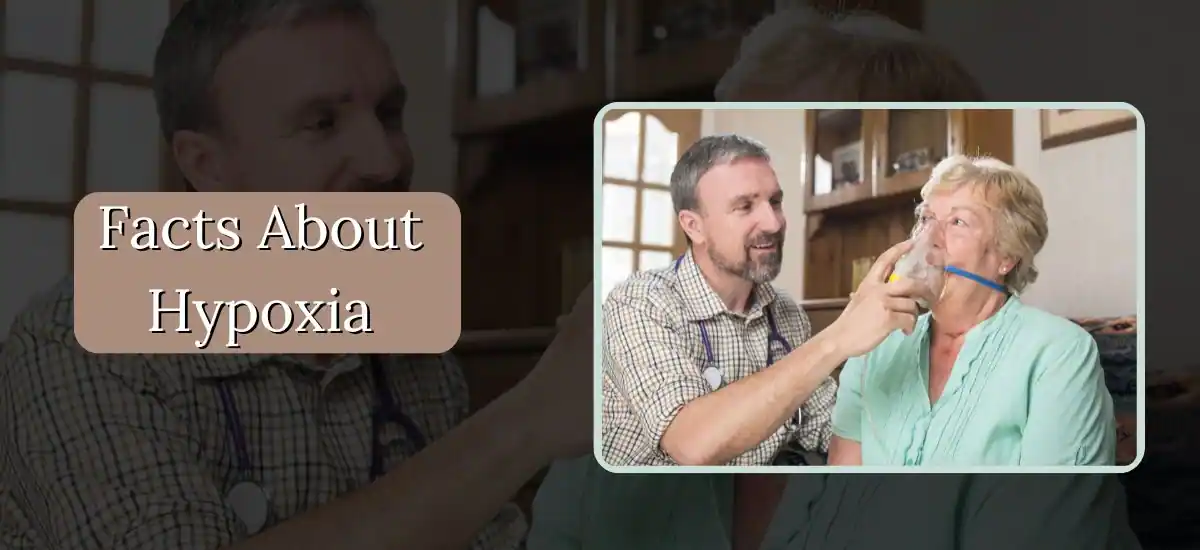Have you ever suddenly felt dizzy, short of breath, or like your heart is racing for no apparent reason? These unsettling sensations might be signs of hypoxia, a condition characterized by inadequate oxygen supply at the tissue level. Whether due to health complications or environmental factors, understanding hypoxia is crucial, as it affects vital body functions and can lead to serious consequences if not addressed promptly. Let’s take a closer look at what hypoxia is, why it occurs, and the impact it can have on your well-being.
Understanding Hypoxia
What Exactly is Hypoxia?
Hypoxia occurs when your body or a part of it doesn’t receive enough oxygen to function properly. The term stems from Greek, where “hypo” means under, and “oxia” relates to oxygen. This lack can be localized to a specific area, like a limb, or it can be more general, affecting the whole body.
Common Causes:
- Medical Conditions: Various health issues such as chronic obstructive pulmonary disease (COPD), asthma, and heart problems can lead to hypoxia. These conditions interfere with the ability to adequately absorb or transport oxygen.
- Environmental Factors: High altitudes are a less obvious but common cause of hypoxia. The higher you climb, the thinner the air and the less oxygen available for you to breathe. This is why even healthy climbers can suffer from altitude sickness, which is essentially hypoxia.
Effects on the Body:
The consequences of hypoxia can range from mild to life-threatening. It can affect cognitive function, impair organ operation, and if severe, lead to organ failure.
Symptoms of Hypoxia

Early Signs to Watch For:
- Breathing Difficulties: Shortness of breath and rapid breathing are among the first signs of hypoxia. You might find it hard to catch your breath even with mild exertion.
- Heart Issues: A fast heart rate or palpitations can also indicate hypoxia, as your body attempts to compensate for the lack of oxygen by circulating blood faster.
Progressive Symptoms:
- Skin Coloration Changes: Cyanosis, or a bluish discoloration of the skin, especially around your lips, fingertips, and toes, can occur as oxygen levels drop.
- Mental Effects: Confusion, changes in behavior, and a sense of euphoria are serious symptoms that suggest hypoxia is affecting brain function.
- Physical Discomfort: Persistent headaches, excessive sweating, and fatigue are also indicative of prolonged oxygen deprivation.
Understanding the Severity:
Recognizing these symptoms early is crucial for prompt treatment. Hypoxia can rapidly become dangerous, making awareness and quick action essential for preventing more severe health issues.
Types of Hypoxia
Understanding the various forms of hypoxia can help in identifying the specific challenges and treatment approaches necessary:
- Hypoxic Hypoxia: Often related to high altitudes or lung diseases, this type occurs when the oxygen level in the air is insufficient, or the lungs cannot effectively transfer oxygen into the blood.
- Anemic Hypoxia: Caused by an inability of the blood to carry adequate oxygen due to a lack of hemoglobin or a decrease in red blood cells. Common causes include anemia and blood loss.
- Circulatory Hypoxia: Results when blood cannot circulate quickly enough to meet the body’s oxygen needs. This can be due to heart failure, a sudden drop in blood pressure, or severe blood loss.
- Histotoxic Hypoxia: Occurs when cells are unable to utilize oxygen provided to them due to toxins like cyanide that interfere with cellular oxygen use.
Diagnosing Hypoxia
Identifying the Underlying Causes:
- Physical Examination: Initial assessment by a healthcare provider, focusing on signs like cyanosis, fast breathing, and checking oxygen saturation levels.
- Pulse Oximetry: A non-invasive test that uses a sensor placed on a thin part of your body, usually a fingertip or earlobe, to estimate how much oxygen is in your blood.
- Arterial Blood Gas (ABG) Test: A more precise test that measures oxygen and carbon dioxide levels in the blood taken from an artery. It’s especially useful in assessing how well your lungs are moving oxygen into the blood and removing carbon dioxide from the blood.
Treatment Options for Hypoxia

Effective Interventions Based on Severity and Cause:
- Supplemental Oxygen: For immediate relief from hypoxic symptoms, supplemental oxygen is often administered through a mask or nasal prongs to increase the oxygen concentration in the lungs.
- Addressing Underlying Conditions: For anemic hypoxia, treatments may include blood transfusions or medications to increase red blood cell count. For circulatory hypoxia, medications or surgeries to improve heart function may be necessary.
- Lifestyle Changes: In cases where lifestyle factors contribute to hypoxia, such as smoking or exposure to toxins, eliminating these risks can significantly improve oxygen levels.
- Long-term Management: In chronic cases, ongoing monitoring and treatment might be required to manage the condition effectively.
Prevention and Management
- Avoid High Altitude Sickness: If traveling to high altitudes, take time to acclimatize to the elevation gradually. Consider using supplemental oxygen if needed.
- Monitor Chronic Conditions: Regularly manage and monitor chronic respiratory and cardiovascular conditions with the help of healthcare professionals to prevent episodes of hypoxia.
- Maintain Healthy Lifestyle: Engage in regular physical activity, maintain a healthy diet, and avoid smoking to enhance overall respiratory and cardiovascular health.
- Workplace Safety: Ensure adequate ventilation and protective measures when working with chemicals or in environments with potential air quality issues.
Complications of Untreated Hypoxia
- Organ Damage: Extended periods of low oxygen levels can lead to irreversible damage to vital organs, including the heart and brain.
- Cognitive Decline: Chronic hypoxia can impair cognitive functions, leading to difficulties with memory, problem-solving, and other mental tasks.
- Increased Risk of Heart Disease: Persistent low oxygen levels can put extra strain on the heart, increasing the risk of heart failure or other cardiovascular diseases.
Prompt Attention is Critical: Recognizing and treating hypoxia early can prevent these severe complications, underscoring the importance of awareness and proactive health management.
Conclusion
Hypoxia, a serious condition where the body lacks enough oxygen, can be mild or deadly. By recognizing its types and symptoms, and addressing causes, you can manage and prevent its risks. Timely intervention, whether through medical care, lifestyle changes, or oxygen therapy, can greatly enhance health outcomes. Remember, every breath is vital to your well-being. Stay informed and proactive in maintaining healthy oxygen levels.


